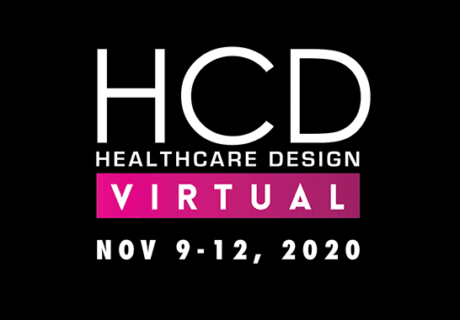HCD Virtual: Strengthening The Case For Resilient Design
As healthcare designers, it’s imperative to ensure that the built environment supports and enables healthcare workers and the community they serve as much as possible during a wide range of potential shocks and stressors. “Hospitals by their nature have to be resilient. They serve the most vulnerable during times of need and must remain operational,” said Joss Hurford, building performance consultant at Affiliated Engineers, during the session “The Many Roads to Resilient Design” at HCD Virtual, Nov. 9-12.
Hurford was joined by Julie Frazier, director of healthcare planning and associate principal at Perkins and Will, Megan Recher, regenerative design specialist and associate at ArchNexus, and Willa Kuh, director of planning, Affiliated Engineers.
During the session, Kuh noted that while the design community and healthcare systems are keenly aware of the need for healthcare facilities to operate without interruption or only with brief interruption when a disaster-scale event occurs, the design community wrestles with several unknowns, including how much a facility design should exceed code to prepare for increasing climate stresses and more impactful and more frequent climate shocks.
For example, climate change and aging infrastructure have accelerated the rate at which disaster scale events are occurring. “This means that when disasters do strike, there’s a greater risk of catastrophic failure at a time when utilities are needed the most,” Hurford said. “As temperature patterns shift and globalization increases, it creates new opportunities for diseases to thrive and spread rapidly. Healthcare facilities must be flexible and adaptive to match these new demands.”
Additionally, codes and standards are generally reactive and are not enough to deliver a resilient facility, Hurford said. “You must look to the future and not the past to get ahead of the next big hazardous event.” As such, he said it’s essential for healthcare organizations to investigate and understand the risks posed to a facility. “Really dig into what the hazards that could threaten you project are,” Hurford said. “What is the likelihood they will occur and what are the implications if they do?”
He suggested looking to areas that have already experienced severe disasters, such as Florida for hurricanes and California for earthquakes, to see how they have adapted their codes to provide better protection, taking into account the origin and age of the information guiding codes, standards, flood ratings, etc., and, where necessary, source predictive data for a picture of what the needs will be in 30 years’ time.”
One tool to help guide project teams in resilient design is RELi, a resilience consensus standard developed in collaboration with stakeholders across the industry, including Perkins+Will and the Institute for Market Transformation to Sustainability, a national nonprofit organization that aims to decarbonize buildings by catalyzing widespread and sustained demand for high-performance buildings. “RELi is a comprehensive action item list that provides a holistic framework to create strategies for a project and a metric to measure it’s success by,” Frazier said.
For a project for the University of Oklahoma Medical Center in Oklahoma City, Okla., designed by Perkins+Will, the project team used RELi to help guide the design of the hospital, which is located in an area that’s vulnerable to tornadoes, sever winter storms, extreme temperatures, drought, flash flooding, and hail. “In addition, it is also the state’s first Level 1 trauma center, so it needed to remain operational throughout many disasters—man-made or natural,” Recher said.
The UOMC hospital was designed with a hardened structure, impact-resistant glazing, and radiant heat for the building entrances to prevent ice buildup, while redundancy measures were designed into critical services, such as energy and water. To address disease outbreaks, the project has two isolation rooms with an ante room on each floor, while the top level is designed as an isolation floor with separate air intake and exhaust.
During the presentation, Hurford introduced the Resilience+ Planning and Design Tool, a large database of ways in which a building can be impacted and fail during a hazard. The proprietary tool, developed by Affiliated Engineers, was soft-launched to the market a year ago. “It maps the risk posed to critical function such as emergency surgery or inpatient care, through the program and building services that support them,” Hurford said. “Design teams can then better understand the threat environment, quantify risk holistically, and better understand where and how to focus their efforts.”
Missed HCD Virtual? Don’t worry. Registration is still open, and all sessions will be available on demand through the end of the year. Visit HCDvirtual.com for more information.
Tracey Walker is managing editor of Healthcare Design. She can be reached at tracey.walker@emeraldx.com.


